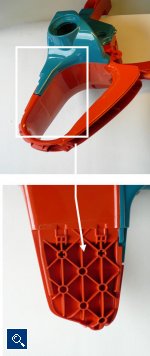Product Design
Dr. Sigrid Brinkmann, Prof. Dr.-Ing. Thomas Brinkmann, Andreas Dörner, Veronika Hackl, Fabian Hellwasser, Florian Pelzl, Dr.-Ing. Wolfgang Schlegel, Timo Schuler, Josef Stubenrauch, Elisabeth Winterstein

Product development with 15 rules
This chapter is free for subscribers.
Content:
(For details of the chapter see also the table of contents on the left)
You buy an access to the whole German (7.1 until 7.4) and English (7.1) text of chapter 7.
The following parts of chapter 7 "Product Design" are available in English [en] and German [de]. The other chapters are only available in German.
English 7.1:
Detailed discussion of all 15 rules
A good mold part requires a material, process and tool-appropriate design. Moldings which are not optimized with regard to these requirements can not be produced with a well-designed tool. The design of good moldings requires compliance with fundamental basic rules. These are described in detail in the article and are illustrated by numerous examples.
- Basic design rules for injection molded parts
- Introduction to Design Rules
Rule 1: Design Minimal Wall Thicknesses [de] [en]
Rule 2: Design Identical Wall Thicknesses [de] [en]
Rule 3: Avoid Material Build-Up [de] [en]
Rule 4: Provide Corners and Edges with Radii [de] [en]
Rule 5: Design Ribs to Suit Injection Moulding Process [de] [en]
Rule 6: Avoid Flat Surfaces [de] [en]
Rule 7: Provide Adequate Conicity [de] [en]
Rule 8: Avoid Undercuts [de] [en]
Rule 9: Avoid Unnecessary Precision Machining [de] [en]
Rule 10: Use Maximum Potential of Free Shaping [de] [en]
Rule 11: Consider the Gate Position When Designing a Mould [de] [en]
Rule 12: Provide Plastic-Metal Composites With a Stress-Compensating Design [de] [en]
Rule 13: Design Plastic-Specific Holes and Cores [de] [en]
Rule 14: Design Plastic-Specific Threads [de] [en]
Rule 15: Optimise Moulded Parts to Suit Production Process [de] [en]